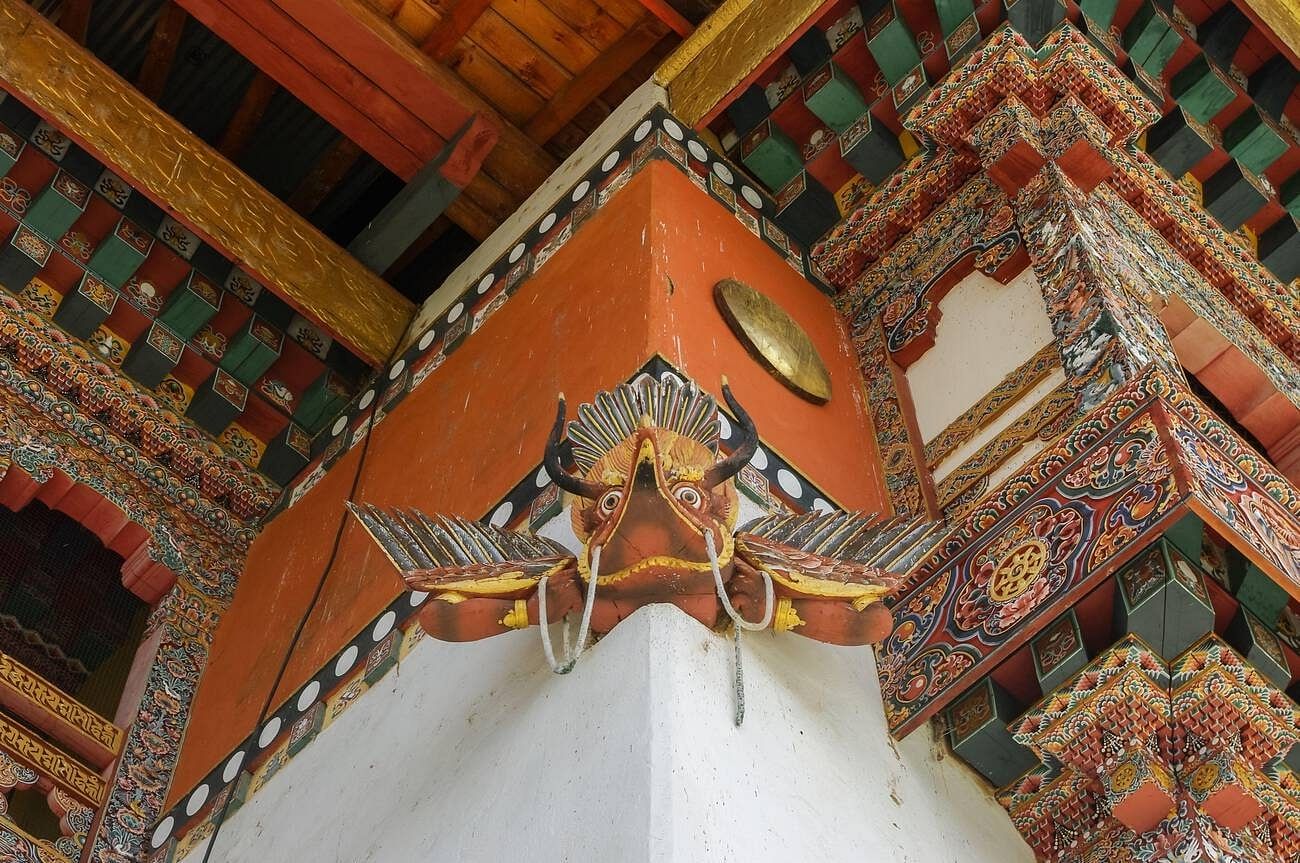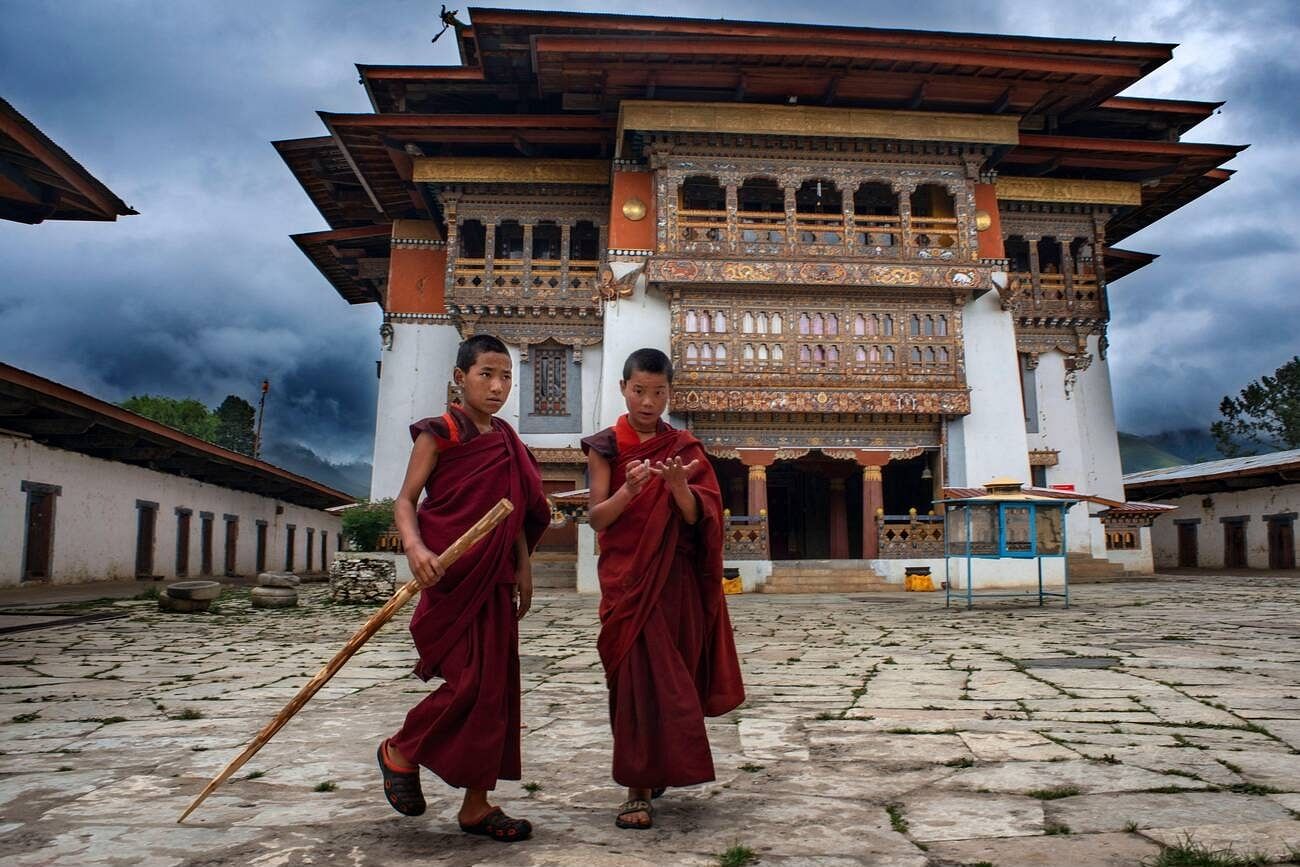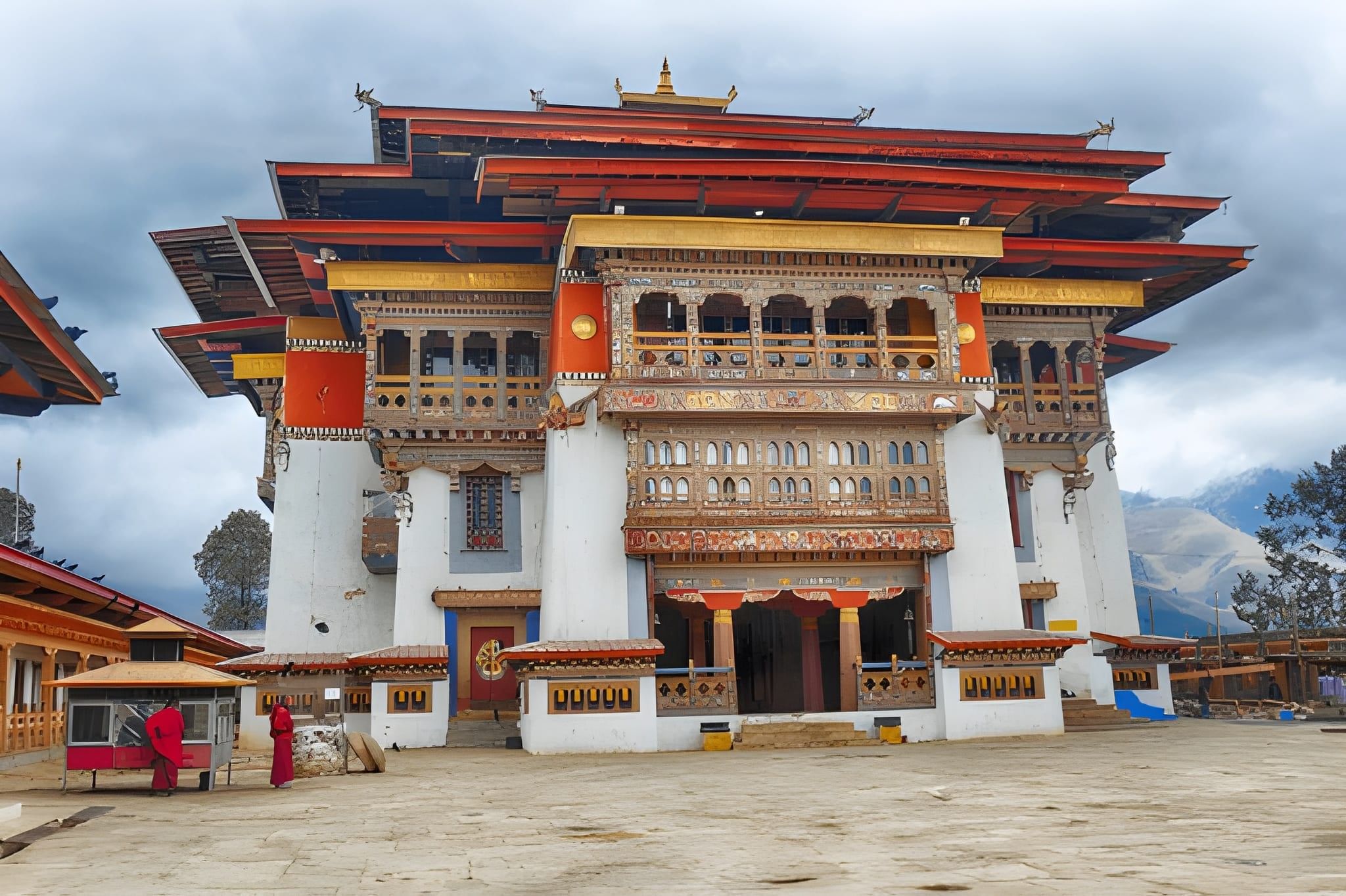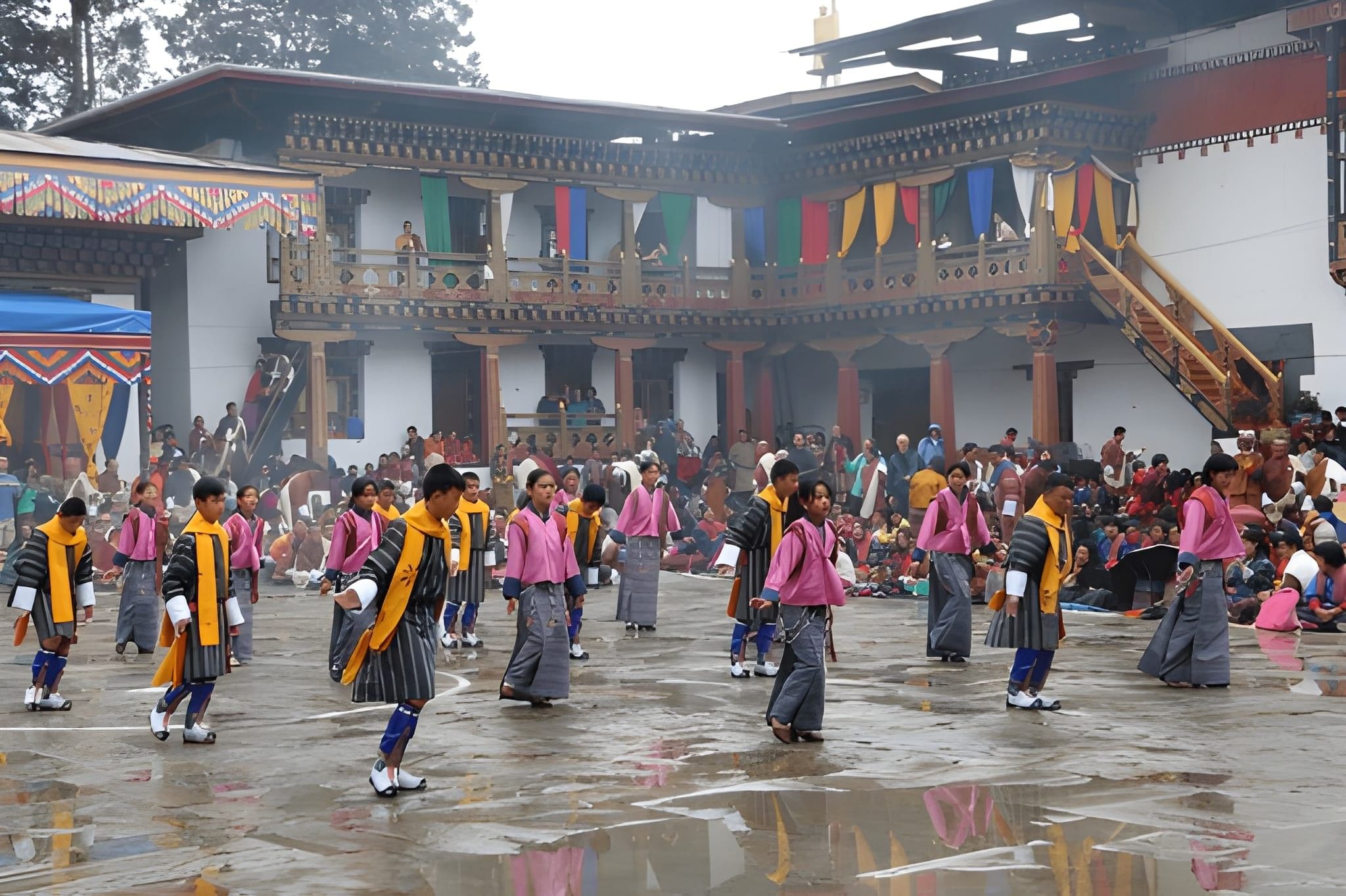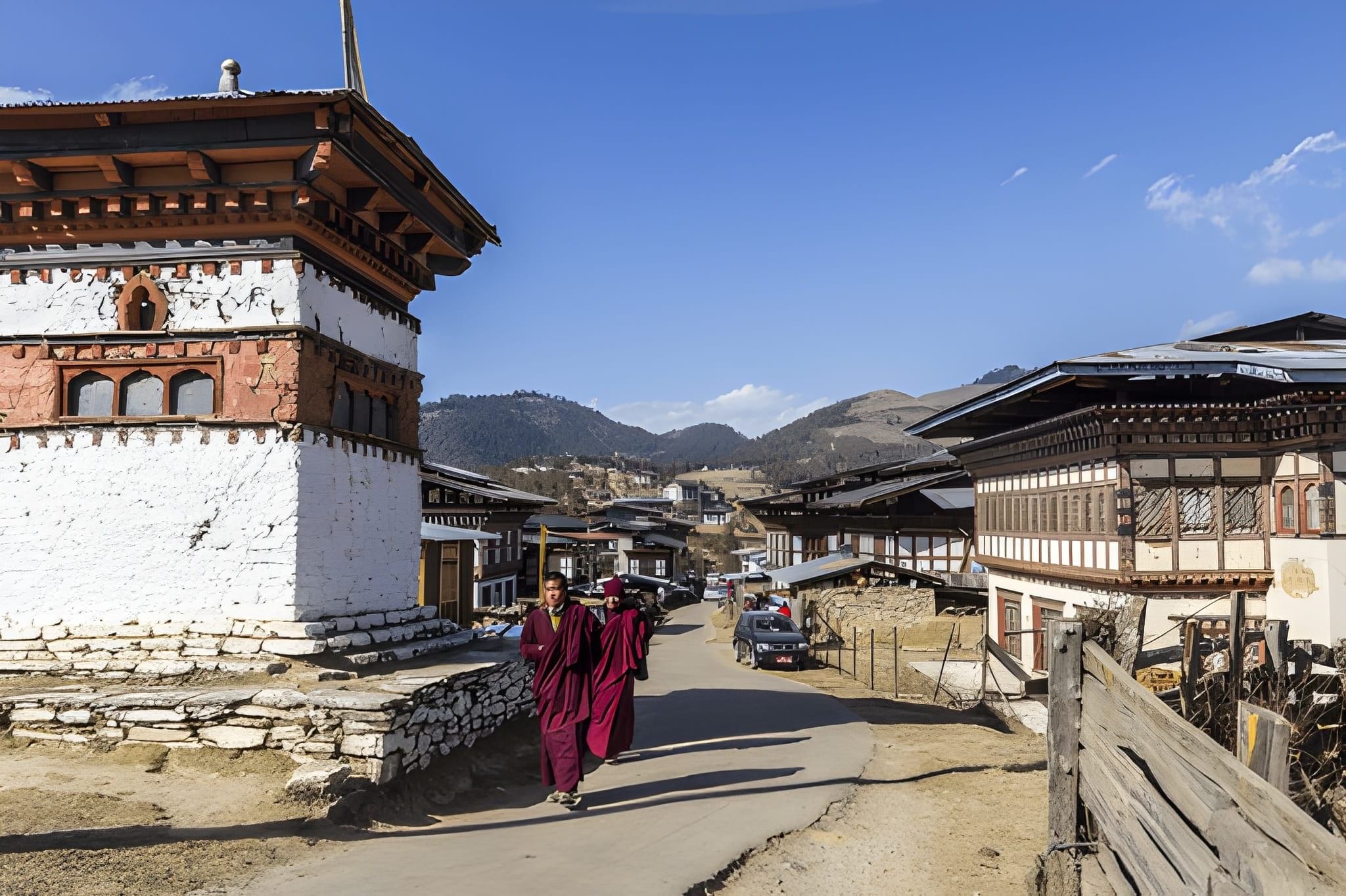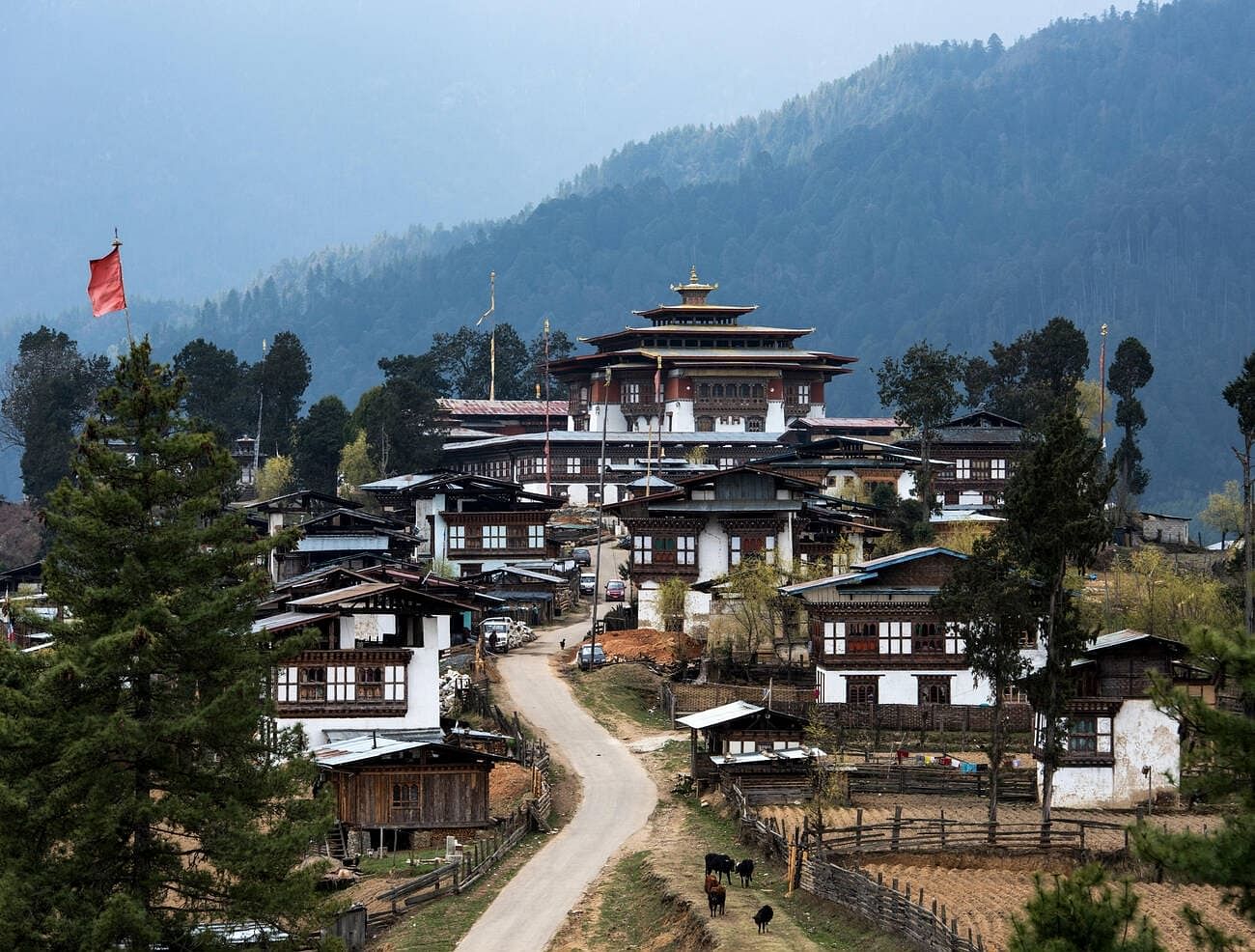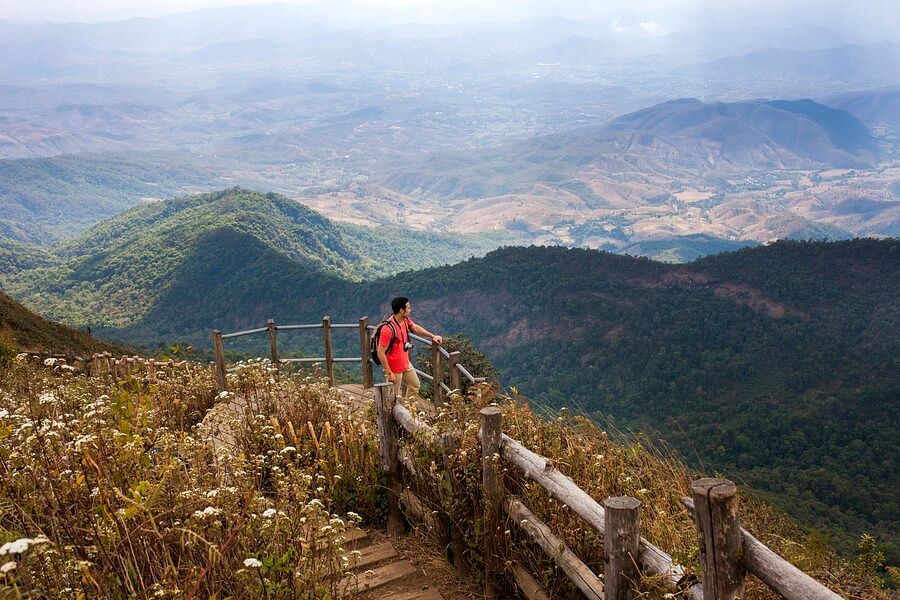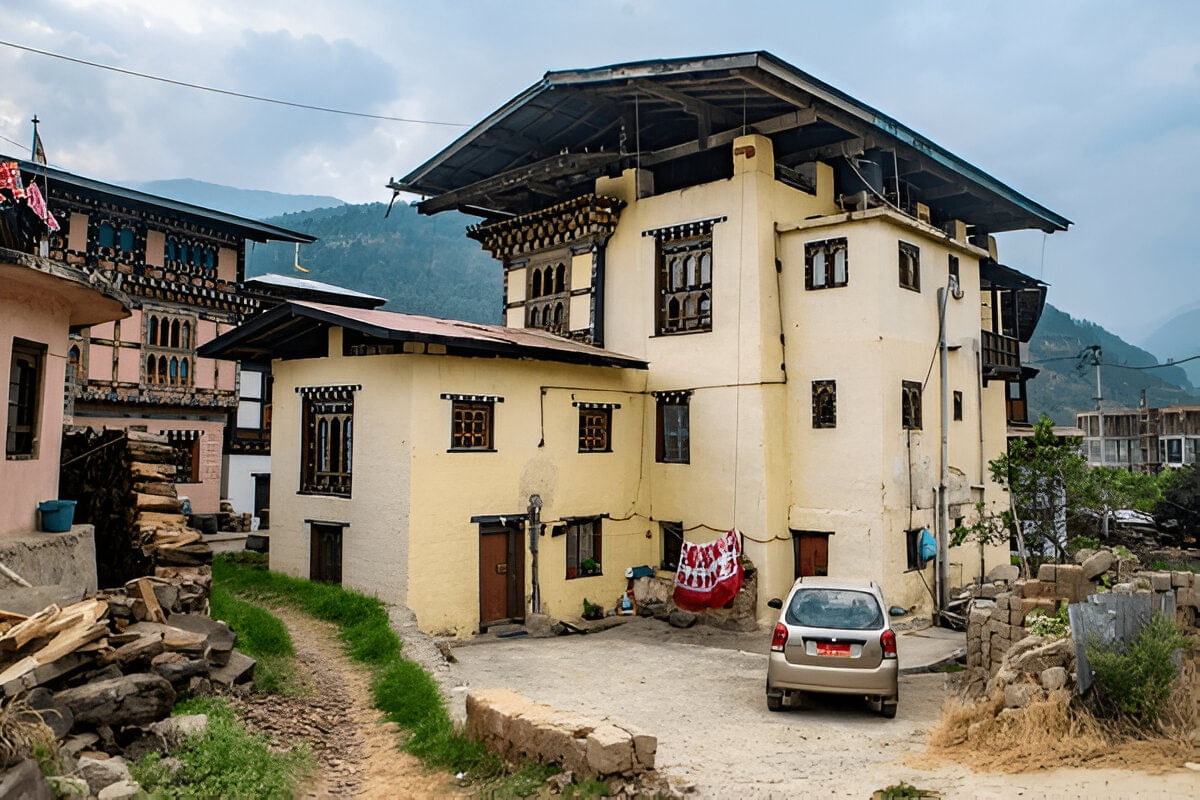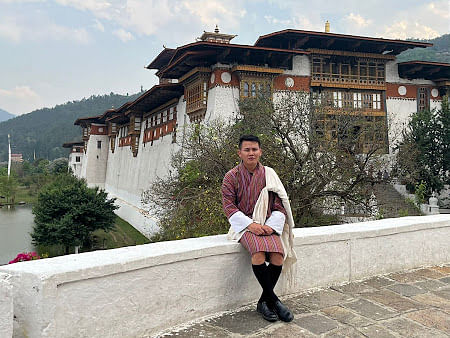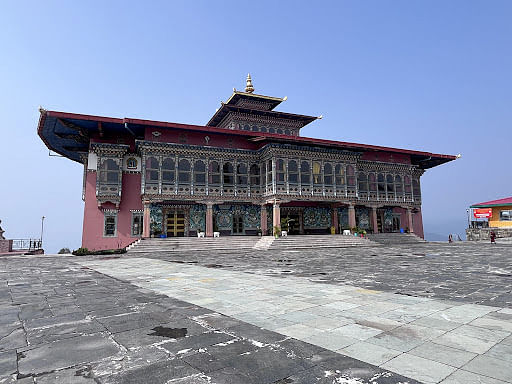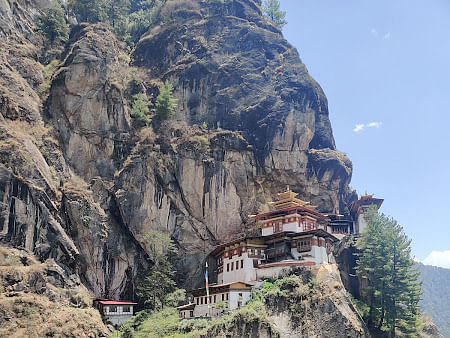Gangtey Monastery sits in a gorgeous valley in Bhutan , and honestly, it's one of those places that just feels right. Built way back in 1613, it's not some reconstructed tourist spot – real monks actually live here and go about their daily prayers.
The valley views are insane. There are mountains all around, clean air, and in the winter, you may even see black-necked cranes frequenting down below. The monastery itself has these incredible hand-carved details and artwork that leave you thinking about how people made such beauty centuries prior.
Look, there are plenty of Places to visit in Bhutan, but Gangtey hits different. It's quiet without being boring, spiritual without feeling preachy. You can just walk around, sit on a bench, and let the peace sink in.
Thinking about going? Check out our Bhutan Tour Packages – we'll help you figure out the best way to experience this gem, along with everything else Bhutan has to offer.
Highlights of Gangtey Monastery
- Location: Phobjikha Valley, Nubding, Bhutan
- Best Time to Visit: October to March for black-necked cranes; March to May for pleasant weather and flowers.
- Entry Fees: Free; guided tours may have extra charges.
- Opening Hours: 8:00 AM – 5:00 PM; mornings are best for prayers.
- Nearby Attractions: Phobjikha Valley, Gangtey Nature Trail, Black-Necked Crane Centre, Khewang Lhakhang.
- Tips: Dress respectfully, visit early for fewer crowds, enjoy scenic walks, and catch festivals like the Crane Festival in November.
best selling bhutan tour packages
What is the History of Gangtey Monastery in Bhutan?
The History of Gangtey Monastery begins in the early 1600s. It was built in 1613 by a monk named Gyalse Pema Thinley, the grandson and reincarnation of the famous saint Terton Pema Lingpa. Pema Lingpa was a great treasure revealer and an important figure in Bhutanese Buddhism.
At that time, people believed that the Phobjikha Valley was a holy place. Gyalse Pema Thinley decided to build a monastery here so monks could live and pray in peace. Over the years, Gangtey Monastery became one of the main centres of the Nyingma school of Buddhism, which is the oldest form of Buddhism in Bhutan.
The monastery went through a big repair between 2002 and 2008. This work helped keep the old structure strong and beautiful. The builders made sure to use traditional Bhutanese designs so that the monastery would still look the same as it did hundreds of years ago.
Gangtey Monastery Architecture
The Gangtey Monastery architecture shows the best of Bhutanese art and design. The monastery has a big central tower, also called the utse, surrounded by smaller temples and homes for monks. The walls are made of stone and wood, with detailed carvings and paintings.
Inside, the monastery has many golden statues, colourful murals, and wooden pillars with beautiful patterns. The prayer halls are filled with lamps, drums, and long prayer scrolls. The design reflects peace, faith, and the deep connection between people and nature.
When you walk around the monastery, you can feel how carefully it was built. Even the smallest part, like the carvings on the doors and windows, shows the skill and devotion of the Bhutanese people.
Life Around Gangtey Monastery
Today, many monks live and study at Gangtey Monastery. You can see young monks in red robes chanting prayers, learning Buddhist texts, and helping with daily tasks. The monastery is also home to festivals and teachings that attract visitors from all over Bhutan and other countries.
The place around Gangtey Monastery is full of green hills, forests, and farmland. From the top of the hill, you can see the Phobjikha Valley stretching far and wide. During winter, this valley becomes even more special because it welcomes the beautiful black-necked cranes. These rare birds come from Tibet every year and are believed to bring good luck.
Local people say that when the cranes arrive, they fly three times around Gangtey Monastery before landing in the valley. When they leave, they again circle the monastery three times, as if saying goodbye. This amazing sight fills everyone’s heart with joy and wonder.
Festivals in Gangtey Bhutan
The most famous event here is the Black-Necked Crane Festival, one of the best festivals in Gangtey Bhutan. It takes place every year in November. The festival celebrates the arrival of these beautiful birds. People from nearby villages gather to dance, sing, and perform traditional plays.
The monks also perform sacred mask dances to bless the valley and pray for a good harvest. It’s a happy time when everyone - locals and tourists - come together to celebrate nature and culture.
Things to Do in Gangtey Monastery
There are many things to do in Gangtey Monastery and its surroundings. Here are some of the best activities:
- Explore the Monastery: Walk through the temple halls, look at the beautiful paintings, and talk to the monks if you get a chance.
- Enjoy the View: From the top of the hill, you can see the entire Phobjikha Valley. The view is breathtaking, especially during sunrise or sunset.
- Watch the Black-Necked Cranes: If you visit in winter, go to the nearby crane observation centre. You can watch these rare birds and learn about their story.
- Take a Nature Walk: There are many walking trails around the valley. The Gangtey Nature Trail is one of the most popular. It’s an easy walk through forests and open fields.
- Join a Local Festival: If you come during a festival, don’t miss the traditional dances, food, and songs.
Best Time to Visit Gangtey Monastery
The Best Time to visit Gangtey Monastery is from October to February, especially if you want to see the black-necked cranes. The weather is cool and clear, making it perfect for sightseeing and photography.
Spring (March to May) is also beautiful because the valley is full of flowers and green fields. Summer is rainy, so it’s better to avoid those months if you want to enjoy outdoor walks.
How to Reach Gangtey Monastery
Since there’s no airport right at the monastery, most visitors reach it by road. Here are common routes and what to expect:
From Thimphu (Capital)
- Distance: About 130–135 km from Thimphu to Gangtey.
- Travel Time: Around 4 to 5 hours, depending on road conditions and stops.
- Route: You’ll drive through scenic mountain passes and valleys, so allow extra time for stops, photos and slower driving on curves.
From Paro Airport
- You land in Paro, then continue by road. From Paro to Gangtey is about 150–170 km and about a 5 to 6-hour drive.
- As the airport arrival point, many travellers use Paro as the start for their Bhutan journey and then head to Gangtey.
From Punakha or Wangdue
- If you’re already in places like Punakha, there is a route to Gangtey via the Wangdue-Trongsa highway and a turn to Phobjikha Valley. One source says “about 80 km from Punakha Dzong” to the monastery.
- Because the roads can be narrow and windy, travelling by private taxi or car is recommended rather than taking frequent public buses.
Transport & Practical Tips
- A private car or taxi is the most convenient and flexible way to reach Gangtey; you can stop for scenic views and manage your schedule.
- Public buses may exist in some stretches but are limited and less reliable for reaching remote valleys like Phobjikha.
- If you have a guided tour in Bhutan (which many travellers do, since the government regulates tourism), the tour operator will arrange transport and a guide.
Alternative / Faster Option
- Some accommodations mention that there is a helicopter service to Gangtey from Paro or Thimphu (for more premium travel). For instance, one lodge says “Paro to Gangtey 25 min by helicopter”.
- This is less common and more expensive, but an interesting option for those short on time or seeking a special experience.
Places to Visit Near Gangtey Monastery
There are many places to visit near Gangtey Monastery that are worth exploring:
- Phobjikha Valley: The Phobjikha Valley is one of the most beautiful places in Bhutan. It lies right below the Gangtey Monastery and is surrounded by green fields, pine forests, and high mountains. The valley is also home to the famous black-necked crane that migrates from Tibet every winter. You can walk around the valley, take photos of the open landscape, and enjoy the peace. It’s a great place to relax and feel close to nature.
- Black-Necked Crane Information Centre: This small centre is located in the heart of the Phobjikha Valley. It teaches visitors about the rare black-necked cranes that visit Bhutan every year from November to March. You can use telescopes to watch the birds from a safe distance and learn how locals protect them. The centre also has pictures, short videos, and stories about crane conservation. It’s a must-visit for nature lovers and children.
- Khewang Lhakhang: Khewang Lhakhang is one of the oldest temples in the Phobjikha region. Built in the 15th century, this peaceful temple is filled with ancient wall paintings and wooden carvings. It’s smaller than the main Gangtey Monastery, but it has a very calm and spiritual feel. Locals often visit here to pray, and you can walk around the temple to enjoy the views of nearby villages and farmlands.
- Longtey Village: Just a short drive from Gangtey Monastery, Longtey Village is a lovely spot surrounded by forests and open hills. The village has traditional Bhutanese homes made of stone and wood, with colourful windows and fluttering prayer flags. You can meet friendly local families, see their farm life, and even try a simple Bhutanese meal. The path from Longtey to Gangtey is also a popular walking route for visitors who enjoy short hikes.
- Gangtey Nature Trail: The Gangtey Nature Trail is one of the easiest and most scenic hikes in Bhutan. It starts right near the monastery and goes through forests, small villages, and open meadows. Along the way, you’ll see yaks grazing, children playing, and monks walking on the path. The trail takes about two hours and offers some of the best views of the Phobjikha Valley. It’s perfect for people who want to enjoy nature without doing a long or difficult trek.
- Punakha Dzong: If you have extra time, travel about two to three hours from Gangtey Monastery to visit Punakha Dzong, one of the most famous fortresses in Bhutan. It sits between two rivers and looks stunning with its white walls and red-roofed towers. Inside, you’ll find beautiful temples, wooden bridges, and peaceful courtyards. Visiting Punakha Dzong gives you a glimpse of Bhutan’s royal history and Buddhist traditions.
These attractions near Gangtey Monastery make your trip even more memorable.
Culture and People of Gangtey
The people who live near Gangtey Monastery are warm and friendly. Most of them are farmers who grow potatoes, barley, and vegetables. They also keep yaks and cows. Life here is simple but happy.
When you visit, you can see how closely nature and religion are connected. People thank the land for giving them food, and they pray for peace and good weather. Visitors often say that the kindness of the locals makes the trip even more special.
Where to stay near Gangtey Monastery Bhutan?
If you're planning to visit Gangtey Monastery in Bhutan, there are several accommodation options nearby to suit different preferences and budgets:
1. Gangtey Lodge, Bhutan
Gangtey Lodge, an award-winning 5-star hotel offering 12 luxurious farmhouse suites with stunning views of the Phobjikha Valley. Guests can enjoy full or half-board options, with rates varying by season. The lodge provides a blend of adventure, spiritual experiences, and cultural immersion.
2. Amankora, Gangtey
A tranquil retreat perched over the valley, offering spa facilities, yoga classes, and guided visits to the local community school. Guests can also experience traditional hot stone baths and meditation sessions with monks.
3. Six Senses Gangtey
Six Senses Gangtey offers eight spacious suites and one two-bedroom villa, providing a luxurious stay with stunning views of the valley. The lodge emphasises wellness and sustainability, offering various activities to connect with nature.
Mid-Range Options
4. Hotel Phobjikha
A luxury retreat surrounded by lush greenery, offering a blend of traditional Bhutanese charm and modern comforts. It's located near the Gangtey Monastery, providing easy access to local attractions.
5. Gangtey Tent Resort
A unique glamping experience with heated floors and electric blankets, offering comfortable tents with amazing valley views. Guests can enjoy the warmth and comfort of the tents while being close to nature.
Budget-Friendly Choices
6. Gangtey Guest House
Located just a few meters from Gangtey Monastery, this guest house offers spacious, clean rooms with traditional decor. Guests can enjoy sunrise views over the valley and experience local hospitality.
7. Yue-Loki Guest House
A quiet guest house known for its large, clean rooms and warm hospitality. The dining area offers great views into the valley, and the surrounding area is beautiful for walks.
What Makes Gangtey Monastery Special in Bhutan?
Gangtey Monastery is special because it is one of the largest and most important Nyingma Buddhist monasteries in Bhutan. Built in 1613 by Gyalse Pema Thinley, it is a centre for spiritual learning and meditation.
Its location in the Phobjikha Valley offers stunning natural beauty, wide-open fields, pine forests, and a peaceful atmosphere rarely found elsewhere. The valley is also home to the endangered black-necked cranes, which visit each winter, adding to the monastery’s unique charm.
The monastery is known for its ancient Bhutanese architecture, colourful paintings, wooden carvings, and daily rituals by monks. It also hosts cultural festivals like the Black-Necked Crane Festival, allowing visitors to experience Bhutanese traditions up close.
Gangtey Monastery Bhutan is a true gem in the heart of the country. With its rich history, stunning views, and peaceful environment, it’s one of the most loved places in Bhutan. Whether you come for the black-necked cranes, the culture, or just the calm atmosphere, Gangtey Monastery will touch your heart.
This beautiful place reminds everyone that peace can be found not only in temples but also in nature and simple living. So, if you ever visit Bhutan, make sure to stop at Gangtey Monastery - it’s a place that will stay with you forever.






